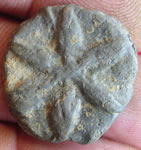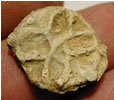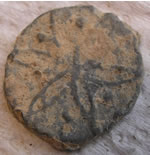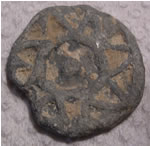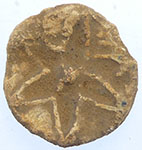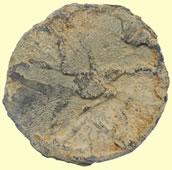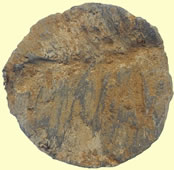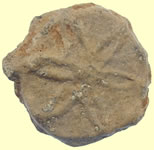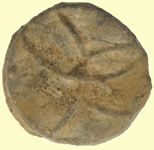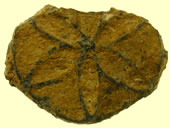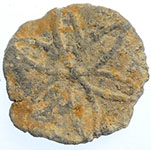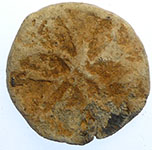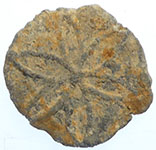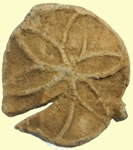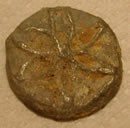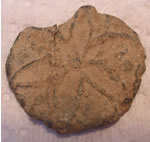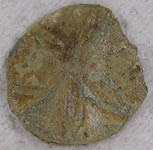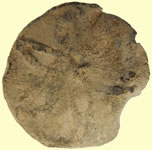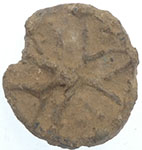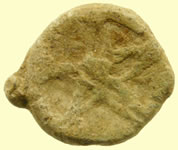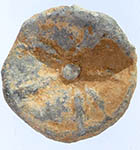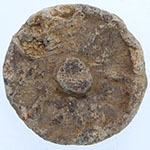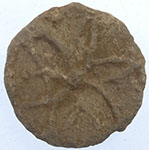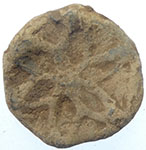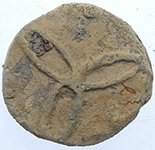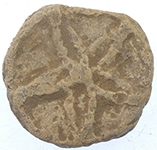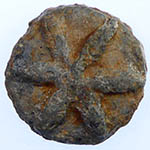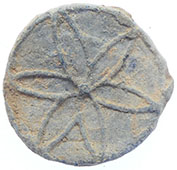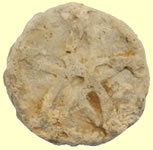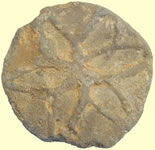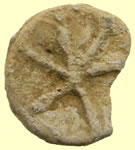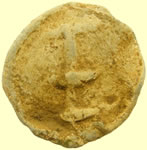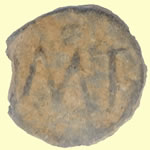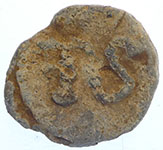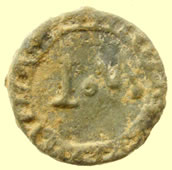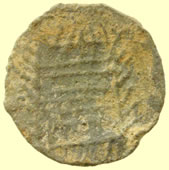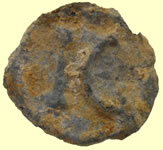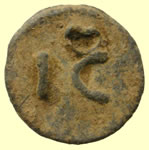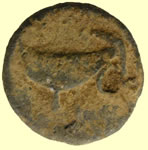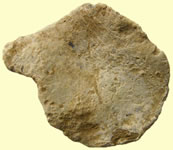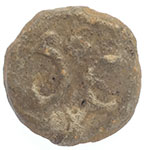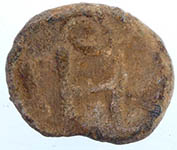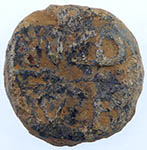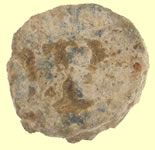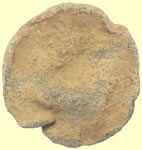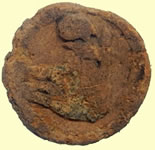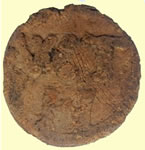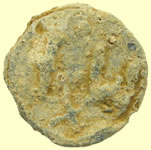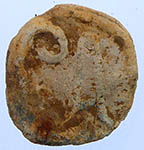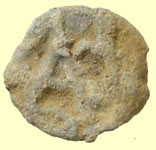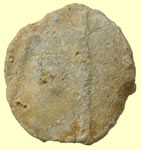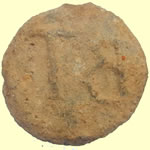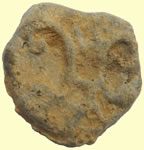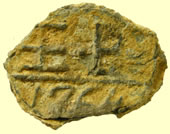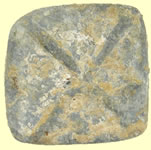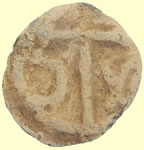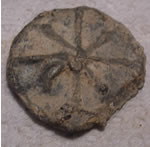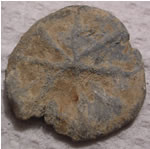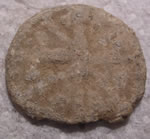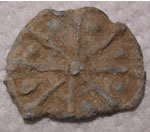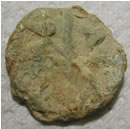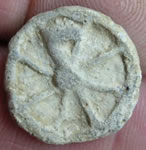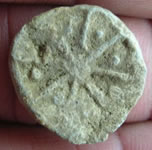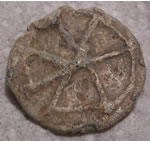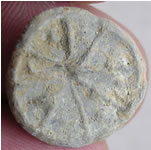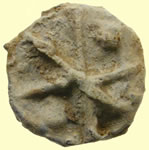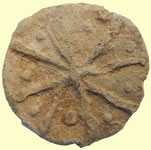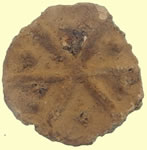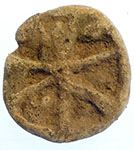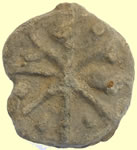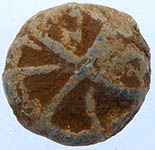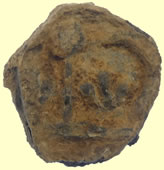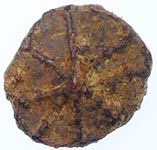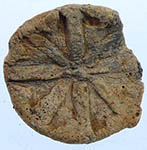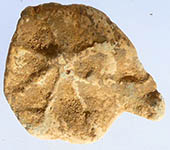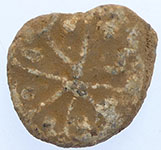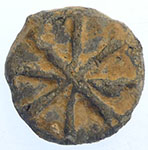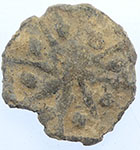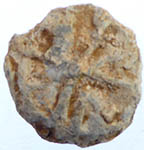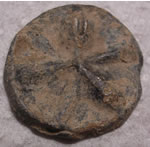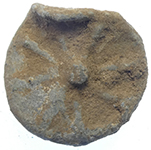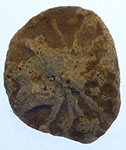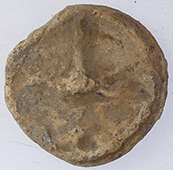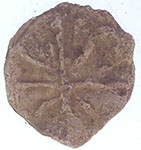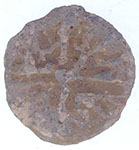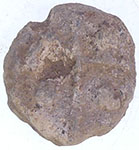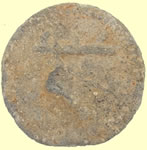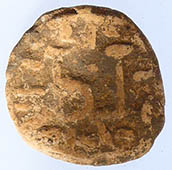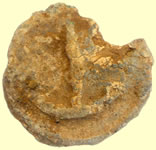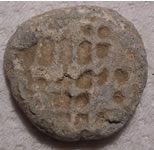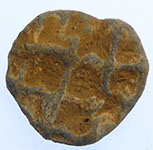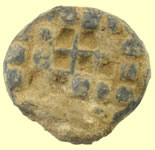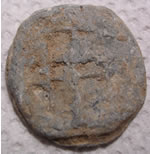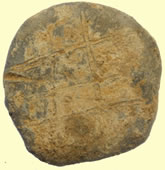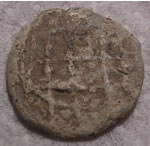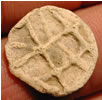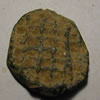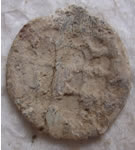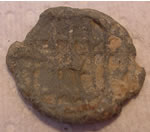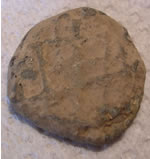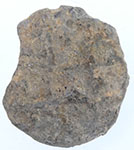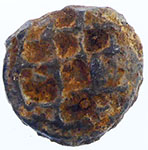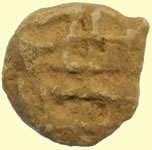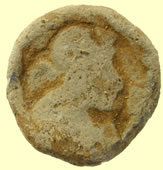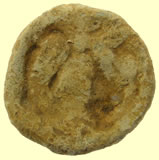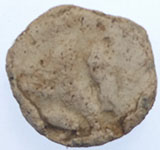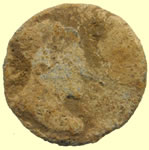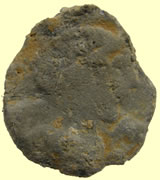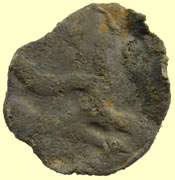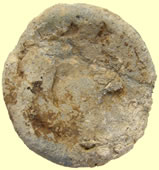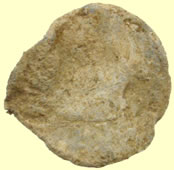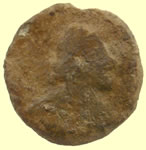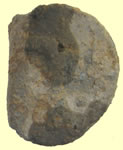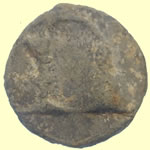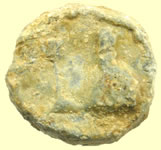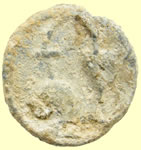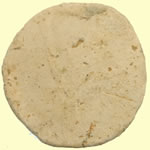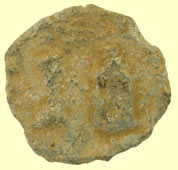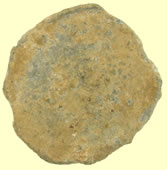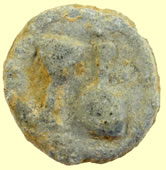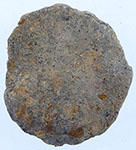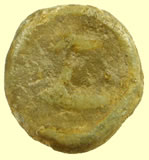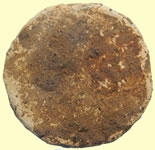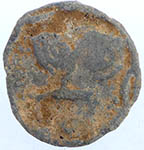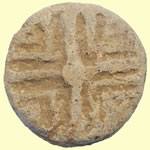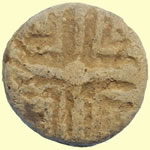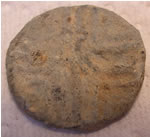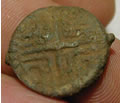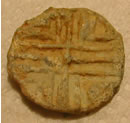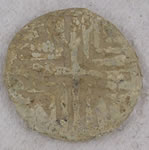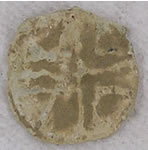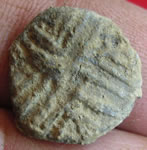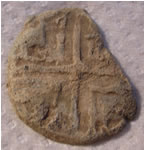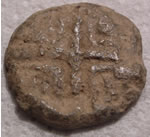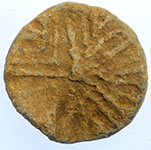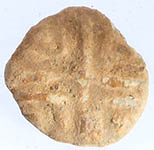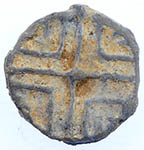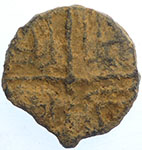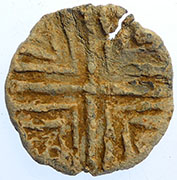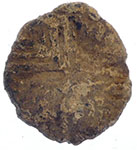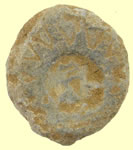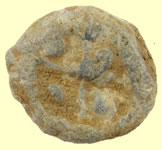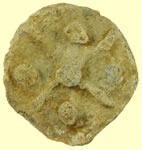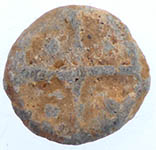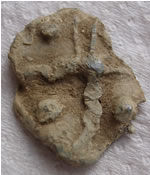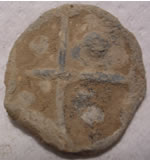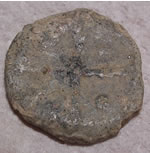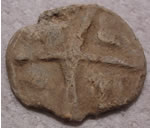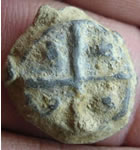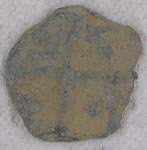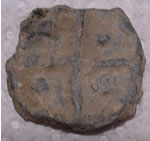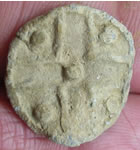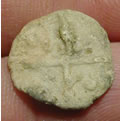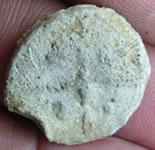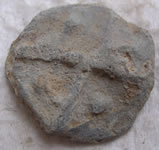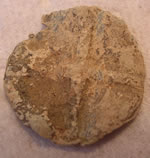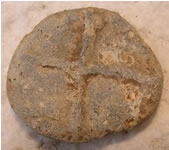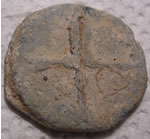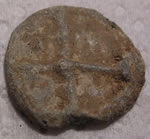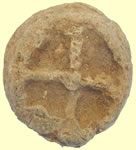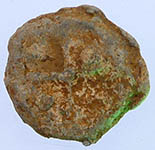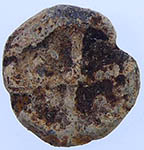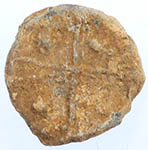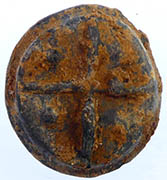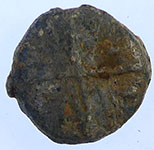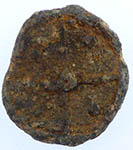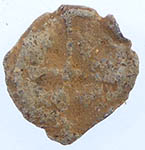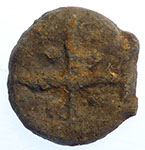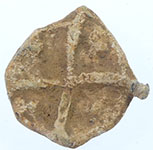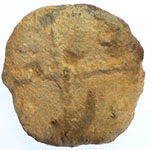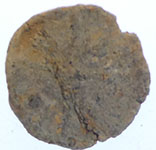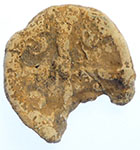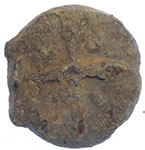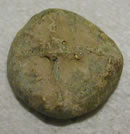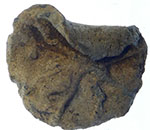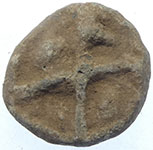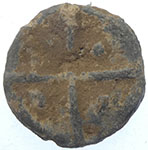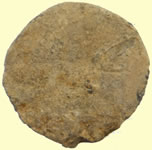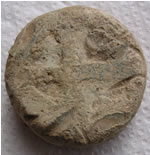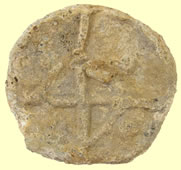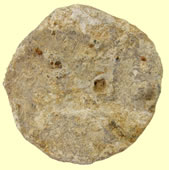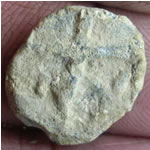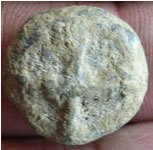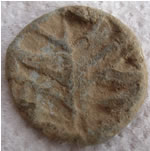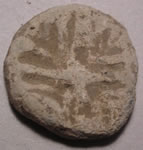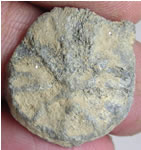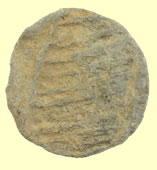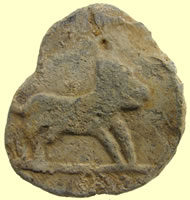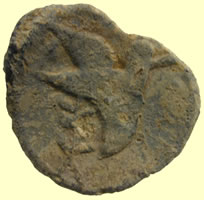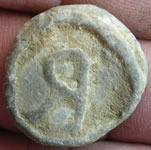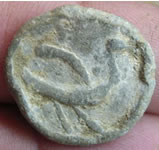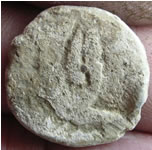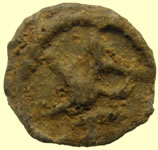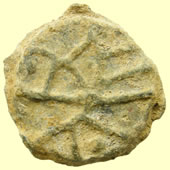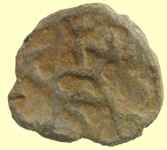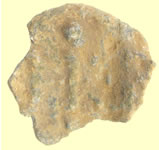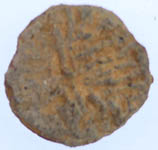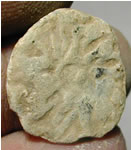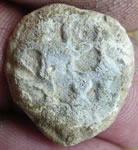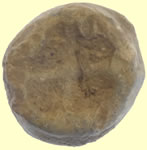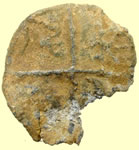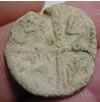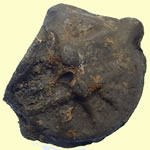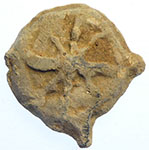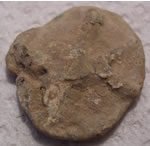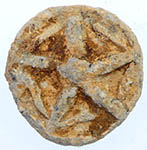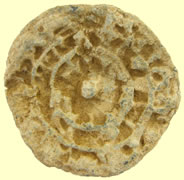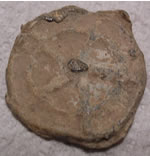

Metal detecting holidays in England with the World's most successful metal detecting club.20 years plus.
Twinned with Midwest Historical Research Society USA.
|
Lead tokens - classic designs are long cross and weave/flower patterns Lead, as it is soft and prone to oxidisation, has rarely been used for coinage proper, and never in England. However, since it is cheap and easy to melt and cast, coin-like objects of lead, and sometimes also of pewter and tin, were widely produced in medieval times up to the nineteenth century. These lead pieces probably had a range of functions, perhaps a cheaper versions of reckoning counters and as token coinage in small scale dealings, and more certainly, as chits, tickets or passes. Ecclesiastical bodies used such tokens to register attendance at services. In most cases it is impossible to ascribe a particular function to these lead pieces.
|
|||
The primary reference on British lead tokens is the two part work by M.Mitchiner and A.Skinner in the British Numismatic Journal: The Powell system for lead tokens is a high-level classification which aims to enable the ordinary
LIST OF TYPES
Lead tokens Roman to 1700 AD
|
|||
1 Symbolic petalled flower Formerly just called petalled flower, but renamed to reflect that actual flower heads are now |
|||
|
|||
2 Initials Initials {type 2}: Includes all sides where the initials are dominant, or equivalent in |
|||
|
|||
Segments {type 3}: Includes any side consisting of three or more segments emanating from b. classify under type 14 if they are simple crosses or crosses with pellets in the centre
|
|||
| 4 Lis | |||
5 Anchors Anchor {type 5}: Fairly non-controversial. |
|||
|
|||
6 Ship Ship {type 6}: Likewise fairly non-controversial. |
|||
7 Hatching, or grid Hatching {type 7}: Includes those sides where the entire surface is hatched in an identical |
|||
|
|||
8 Numeral Numeral {type 8}: Some of these are probably hop tokens, and a pseudo-weight has been |
|||
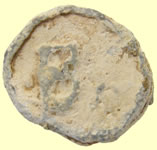    |
|||
10 Heads and busts Heads or busts {type 10}: Most of the English pieces are pseudo-coin designs which mimic |
|||
|
|||
| 11.Tavern utensils {type 11}: Bottles, jugs etc.; anything related to eating, drinking, smoking or any other activity which might normally be associated with an inn or public house. Bob Alvey allocated this number to bottles specifically, but I have extended the application. Occasional overlaps and hybrids: None. Design fairly non-controverisal, although usage can relate to either the public house or the church. It is not always possible to distinguish whether casual refreshment or the eucharist is referred to, and no attempt is made to. |
|||
|
|||
12 Quartered geometric Quartered geometric {type 12}: Any quartered design where the number of segments is |
|||
|
|||
| 13.Frameworks {type 13}: This accommodates a number of designs which border between the abstract and the real, and which may actually represent objects, the nature of which cannot be determined. The design does not cover the whole side, or at least not without significant variation; if it did, it would belong to type 9. Occasional overlaps and hybrids: The ladder does genuinely occur as an object on tesserae, albeit rarely, and some British type 13s might also be intended as such. This means that there is a potential ambiguity between type 13 and type 21 |
|||
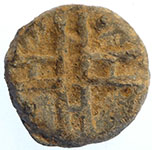 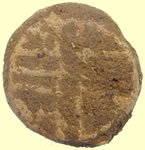 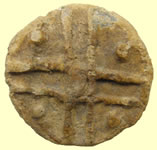 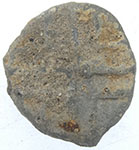  |
|||
14. Crosses {type 14}: Not necessarily religious, although it may be. The cross should not
Very unusual double sided type 14 medieval lead token
Very rare find, 15thC type 2 lead long cross and pellets lead token but with a detailed obverse. Appears to be two sword/daggers with the letter N
|
|||
|
|||
15.Religious {type 15}: Anything which depicts obvious religious symbolism or use, e.g. a
embellished, on the grounds that random design rather than Jewish origin is the more likely reason. Many ancient pieces depict full-length people in the act of sacrificing. These go in type 32 by preference, because the person is more prominent than the reason for the act
|
|||
16 Arms, shields or heraldic designs Arms, shields or heraldic designs {type 16}: Anything where the major type is a shield or |
|||
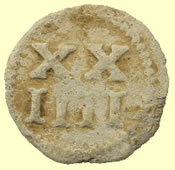 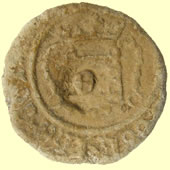 |
|||
16thC Elizabeth 1st lead token 2.75g, 17.85mm - Portcullis with E at centre Obv ***** ERIXE.DEI Rev XXIIII |
|||
17thC token like the Obv of a Charles 1st coin with the shield and harp. The legend reads SVFFOLK which means it is a Suffolk token
|
|||
17.Trees, plants and their produce {type 17}: Anything botanical except national symbols, e.g.
|
|||
18 Birds Birds {type 18}: Any birds except national symbols, e.g. the eagle covered by type 25. |
|||
|
|||
19. Animals, including fish and insects {type 19}: Self explanatory. Same proviso regarding Very few ambiguities, except as with type 18 where poor condition prevents
|
|||
| 20.Merchant marks & other monograms {type 20}: These were frequently used by the more prominent tradesmen until at least the late 17th century. Occasional overlaps and hybrids: Usually fairly non-controversial; only an outside chance of confusing a merchant mark with a type 9 geometric doodle. The fact that merchant parks were usually well-executed helps keep the distinction clearer |
|||
| 21.nanimate objects {type 21} This type, formerly handled as per Appendix A, previously only related to trade equipment and produce, other than milling; it has now taken on a wider meaning, as a consequence of which types 21 and 27 have been combined. Because most inanimate objects prove ultimately to have some likely relation to trade and business, even if only indirectly as a business sign, the original number for trade pieces, 21, has been retained for the combined category. There are certain types of inanimate object which have their own categories, e.g. 11 for eating and drinking utensils, 13 for structures, 16 for shields; where this is the case, these types should take preference. Occasional overlaps and hybrids: Symbols which take the form of trade guild arms, depicted on a shield, go in type 16. Some depictions cannot be clearly distinguished as to whether, for example, they are gloves and boots rather than hands and feet. The practice was at one type to put them to put these into the inanimate category, but new type 33 and 36 have since been created |
|||
| 23.Buildings {type 23}: Any buildings other than mills, which go in type 22. A variety with three very thin towers is believed to be a late mediaeval tax token. Occasional overlaps and hybrids: irregular geometric of type 9, if the intention of a minimally-skilled engraver was not obvious |
|||
| 24.Obscure characters {type 24}: Any characters which are not obviously letters {type 2} or numbers {type 8}, although they may be crude attempts at one or the other. Occasional overlaps and hybrids: The only confusion arises from whether the characters can be identified or not; a decision one way would assign to type 2 or 8, a decision the other to type 24. |
|||
|
|||
| 25.Miscellaneous Objects, Royal {type 25}: Symbols such as crowns, roses, eagles and the like. The late Elizabethan pieces with double-headed eagle on one side and crowned rose on the other, c.1570-1600, are a notable example, although they are not part of the run of crude agricultural pieces. Occasional overlaps and hybrids: The main confusion arises from whether the items depicted are interpreted as royal or not; a decision one way would assign to one of a variety of types {e.g. 4,16,17,18, 19}, a decision the other way to type 25. Crowned heads are assigned to type 10, i.e. that type takes preference. Shields with one or more lis on are debatably type 4 or 16; and, if crowned, 4, 16 or 25 |
|||
|
|||
26.Miscellaneous Objects, Celestial {type 26}: This contains such items as the sun, moon, and
|
|||
| 27.Obscure objects {type 27}: This type was formerly "Miscellaneous Objects, Secular" {type 27}, and handled as described in Appendix A. Nearly all the items which formerly populated it have been reassigned to type 21, with type 27 only being retained as a sump for those items which type 2 and 8 for characters |
|||
| 28.Outer rim or grènetis/wreath {type 28}: The former practice of describing all grenetis pieces as type 28, and handling them as per Appendix A, has been abandoned. This type will now only be used when there is a grenetis and nothing else; for all other pieces: the type number will be determined by the design content within the grenetis the grenetis itself will be treated as a supplementary property, lending itself to some such of "Type N with grenetis {or wreath, as appropriate}", accompanied often by some specifics as to the type of grenetis. A wreath is merely seen as a specific type of grenetis, and treated similarly. |
|||
| 29.Words or significant abbreviations {type 29}: Complete words or names are rare on British lead tokens, but not unknown; on Roman, they are quite common. Occasional overlaps and hybrids: There can be some doubt on occasion, in the Roman series, as to whether a word or a set of initials is intended. If three letters are thought with reasonable probability to constitute an abbreviation, type 29 takes preference; otherwise type 2. Similarly, an abbreviation and a Roman numeral can be confused; if X is involved a number is assumed, on balance, otherwise it is assumed to be an abbreviation or set of initials |
|||
30.Unaccompanied simple designs {type 30}: Accommodates pieces which contain one or
|
|||
| 31.Circular or elliptical geometric {type 31}: Either a set of concentric circles/ellipses, with or without a central hub, or a design consisting primarily of circles/ellipses and their fragments. |
|||
|
|||
| 32.People {type 32}: Anyone standing, sitting, riding, walking, running or lying down; in other words, anything which shows the whole person, rather than a mere head or bust. The latter go in type 10, whilst other isolated body parts, e.g. hands or legs, go in type 33. Excessively common in the Roman series, and also in those mediaeval series, e.g. French, which depict patronal saints. Occasional overlaps and hybrids: Full length depictions of people riding animals are type 32 rather than type 18 |
|||
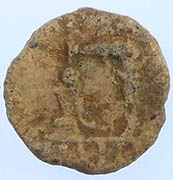 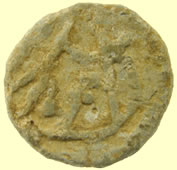 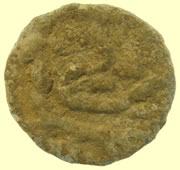 |
|||
| 33.Body parts, other than heads and hearts {type 33}: An attempt was made during the first revision to remove parts of the human body, which did not obviously fit elsewhere, from removed to type 36 during the second |
|||
34. Halved geometrical {type 34}: An attempt during the first revision to remove from type 12 those designs which are based on halving rather than quartering of the main field. |
|||
| 35.Toothcomb or halfbeard {type 35}: Introduced during the first revision to accommodate certain pieces found in Forgeais, this is an exclusively French type, borrowed from certain elements of their local coinage, in which the lower half of the design consists of a series of parallel lines. The upper part can be various, but often appears as the components of a face, albeit sometimes rather strangely rendered. In practice this may just be some combination of crosses, annulets and pellets which comes across as nose and eyes. J.N.Roberts' "Silver Coins of Mediaeval France", p.269, explains that the type derives from the French region of Champagne, where a numismatic pun was effected by putting a comb {peigne} in the field {champ} of a coin. |
|||
| 36.Hearts {type 36}: These being fairly obviously symbolic, rather than representation of actual body parts, have now been removed from type 33, where they were placed by the first revision |
|||
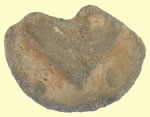 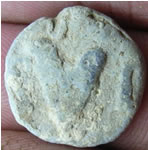 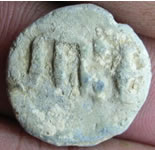 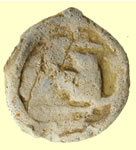 |
|||
| 37Scenery {type 37}: Self-explanatory, although very rare on lead | |||
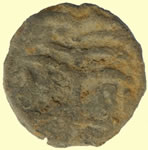 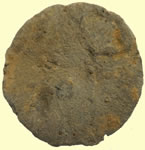 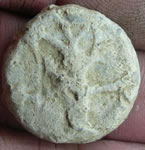 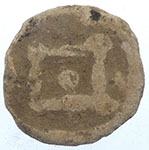 |
|||

